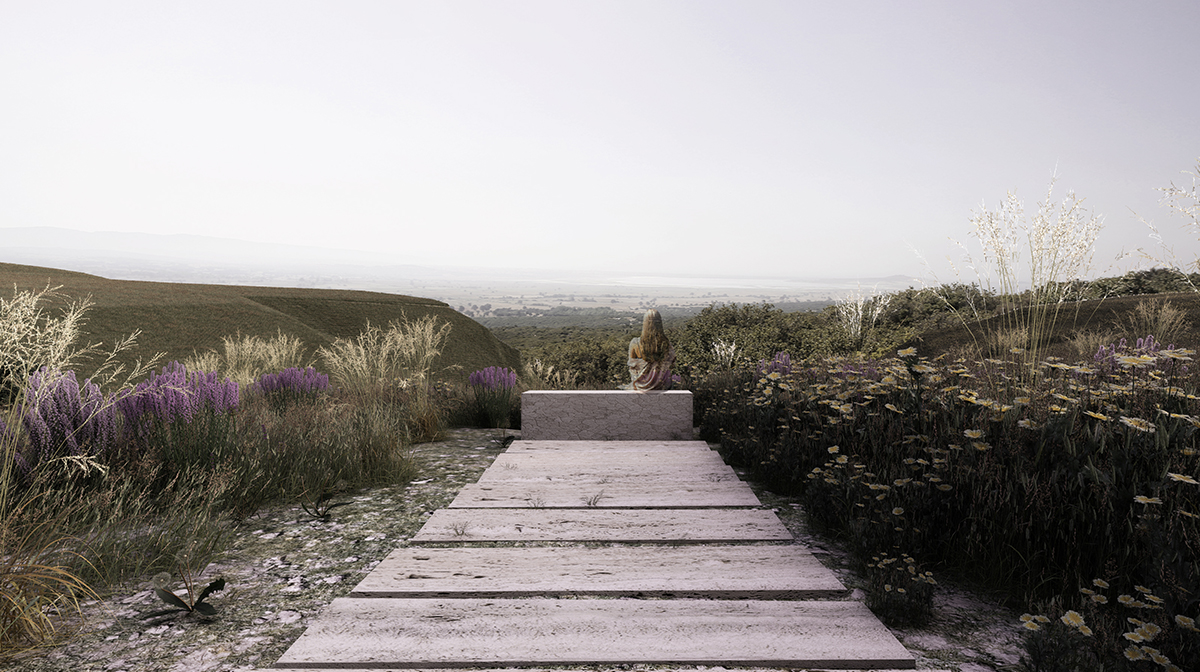
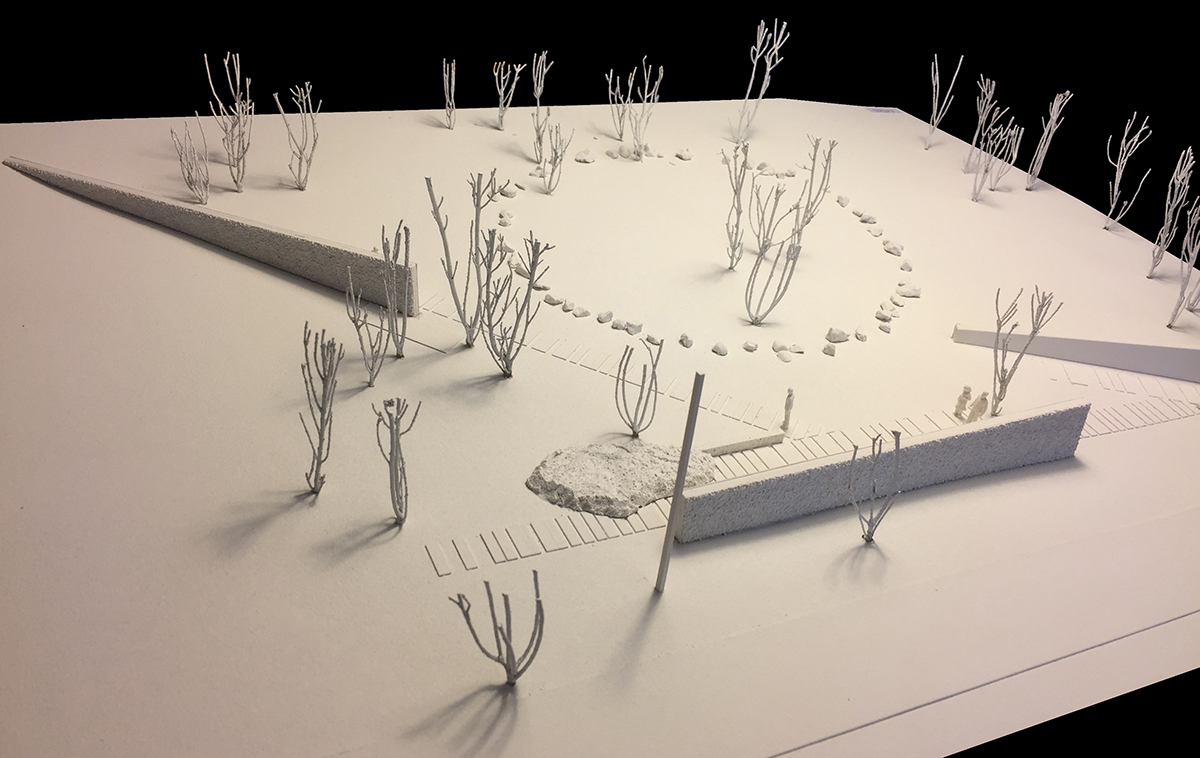
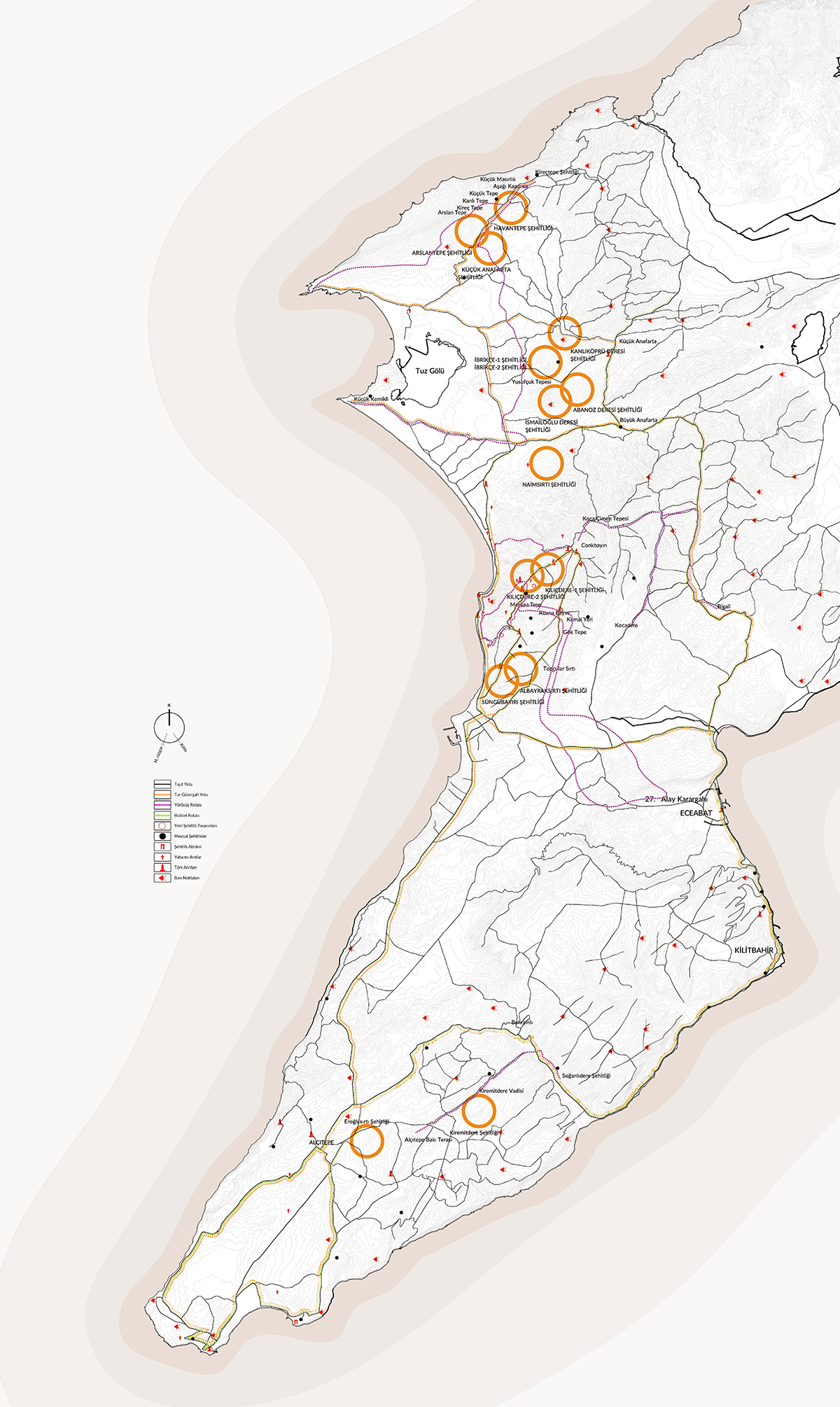
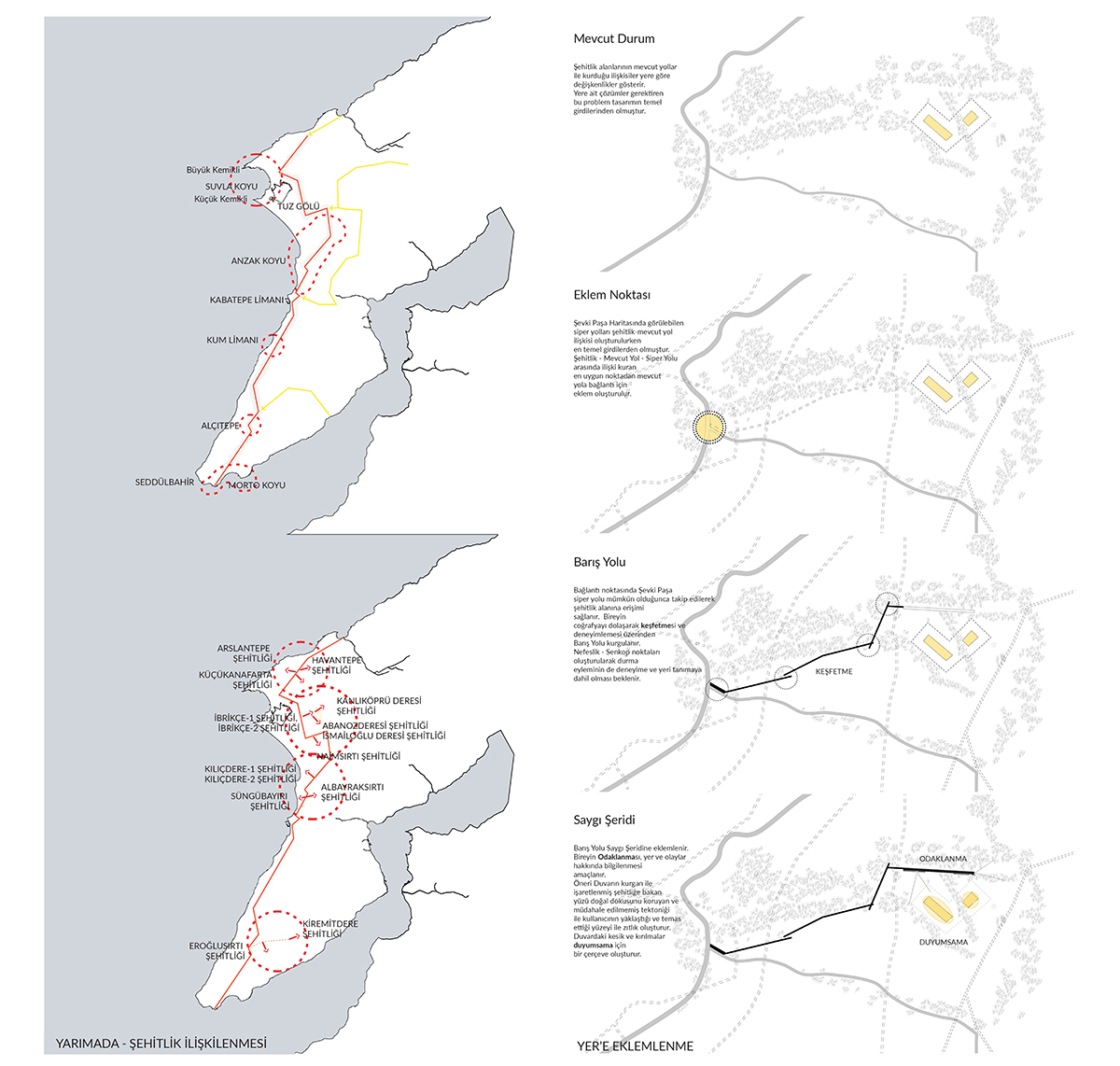
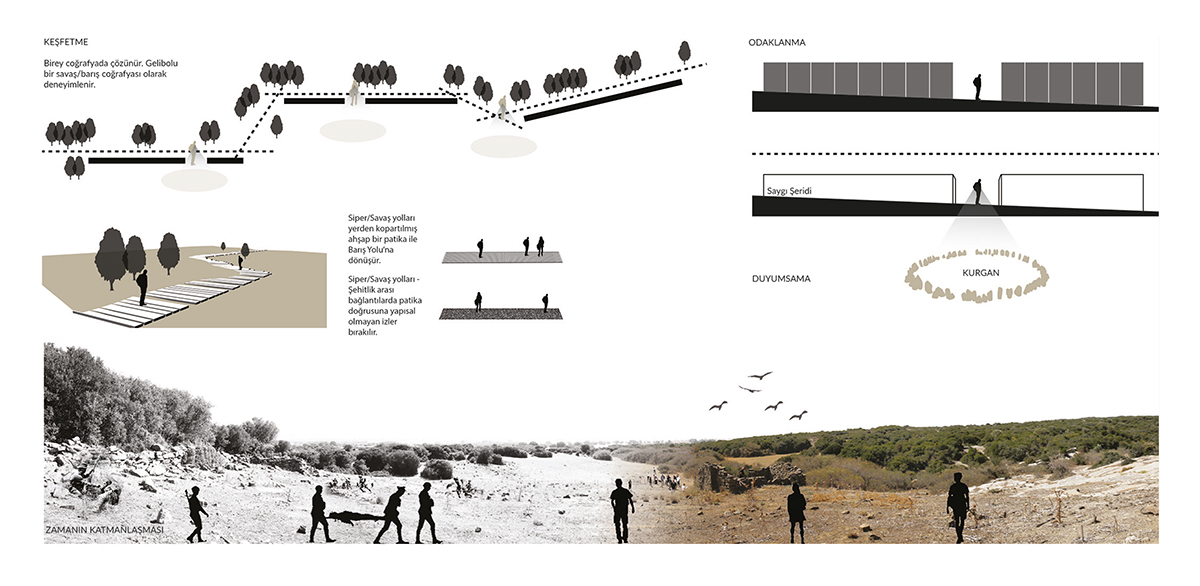
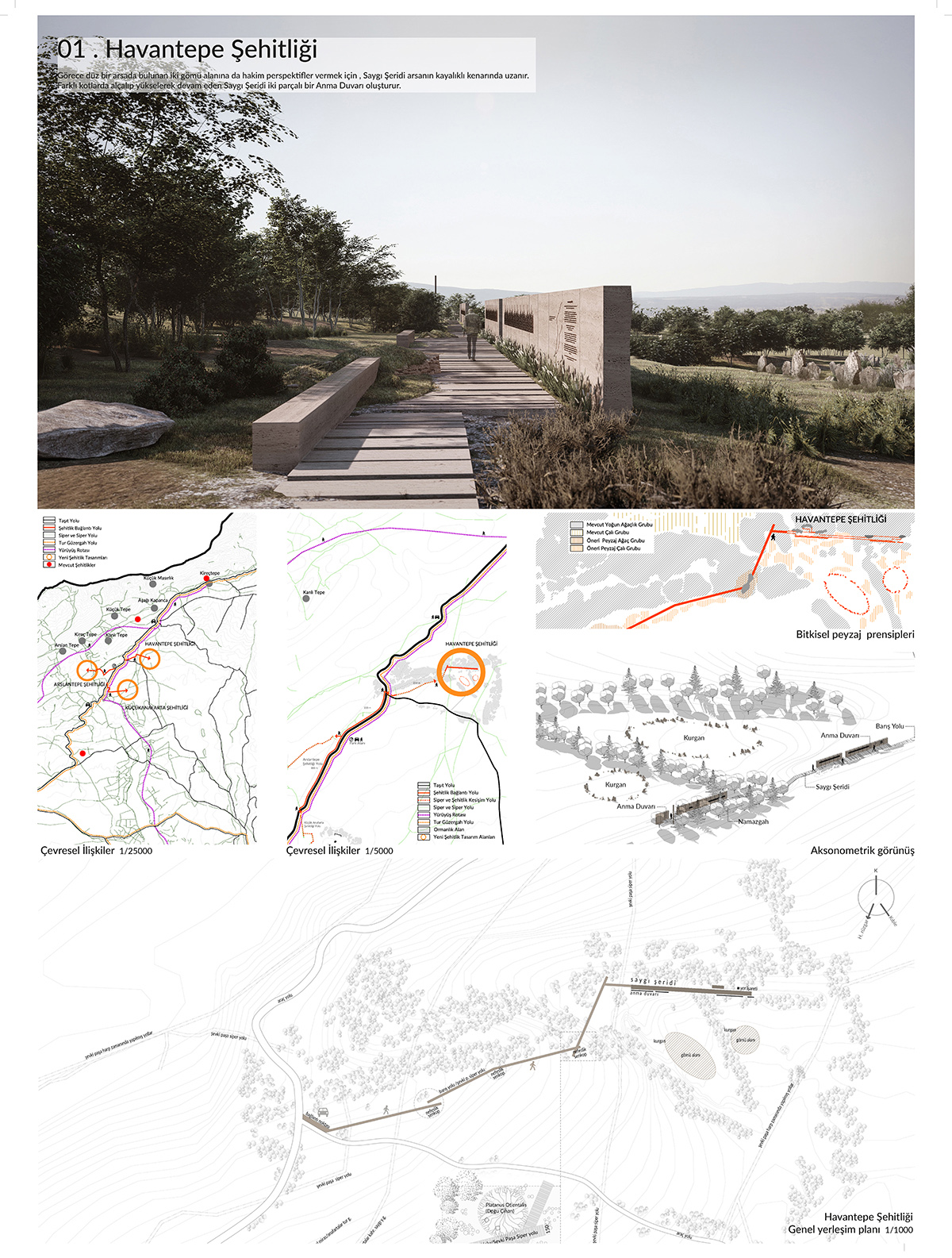
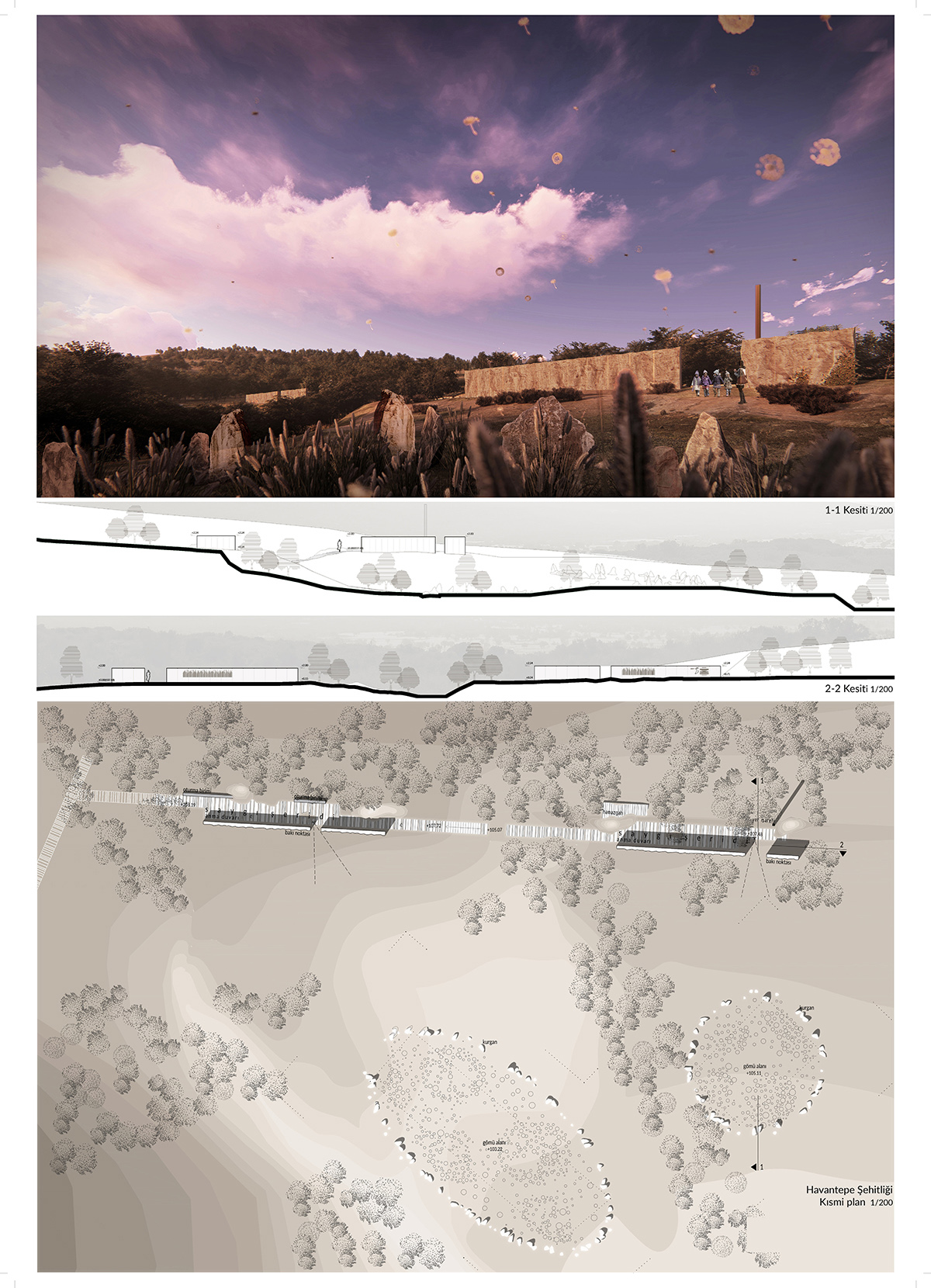
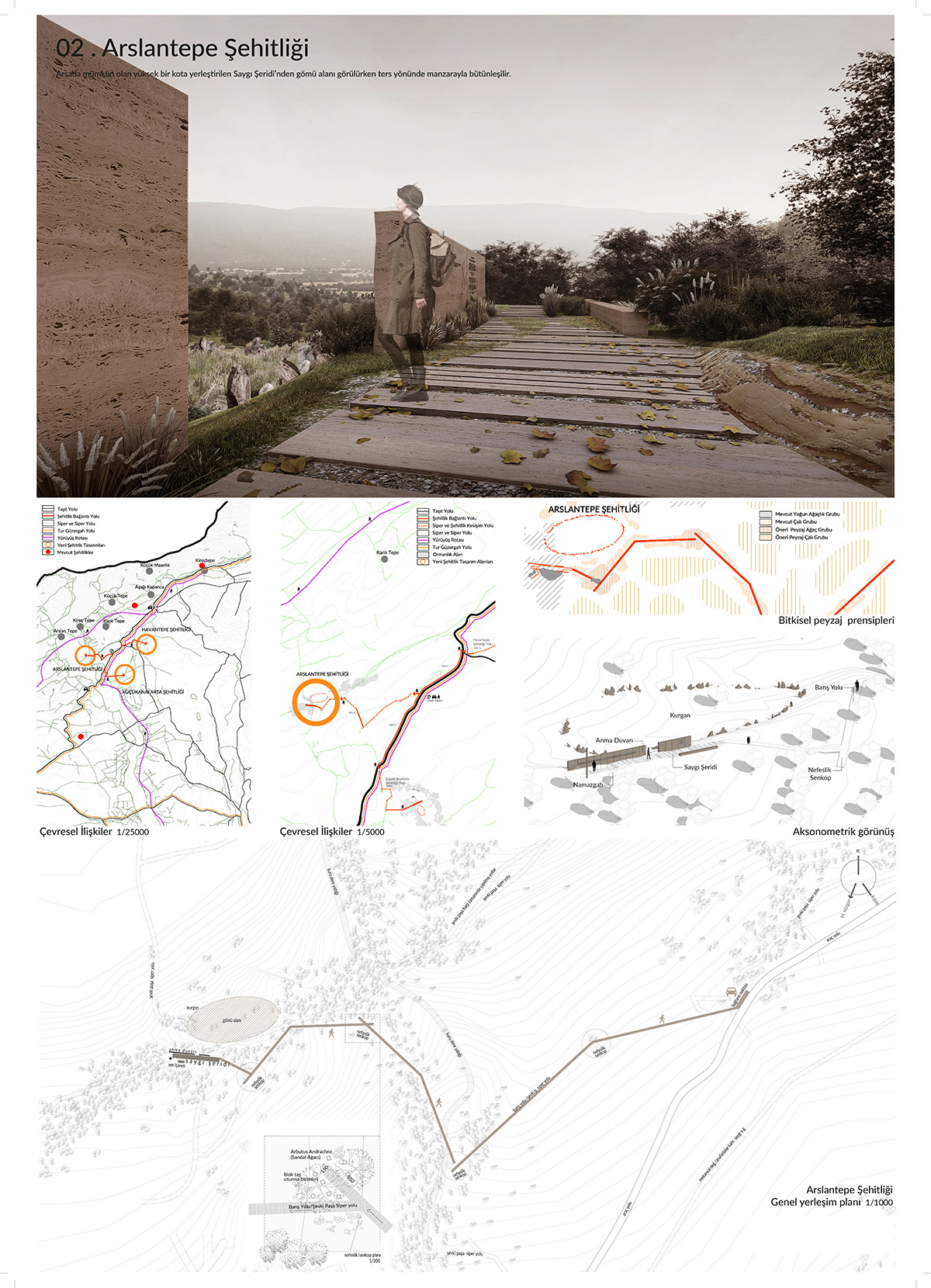
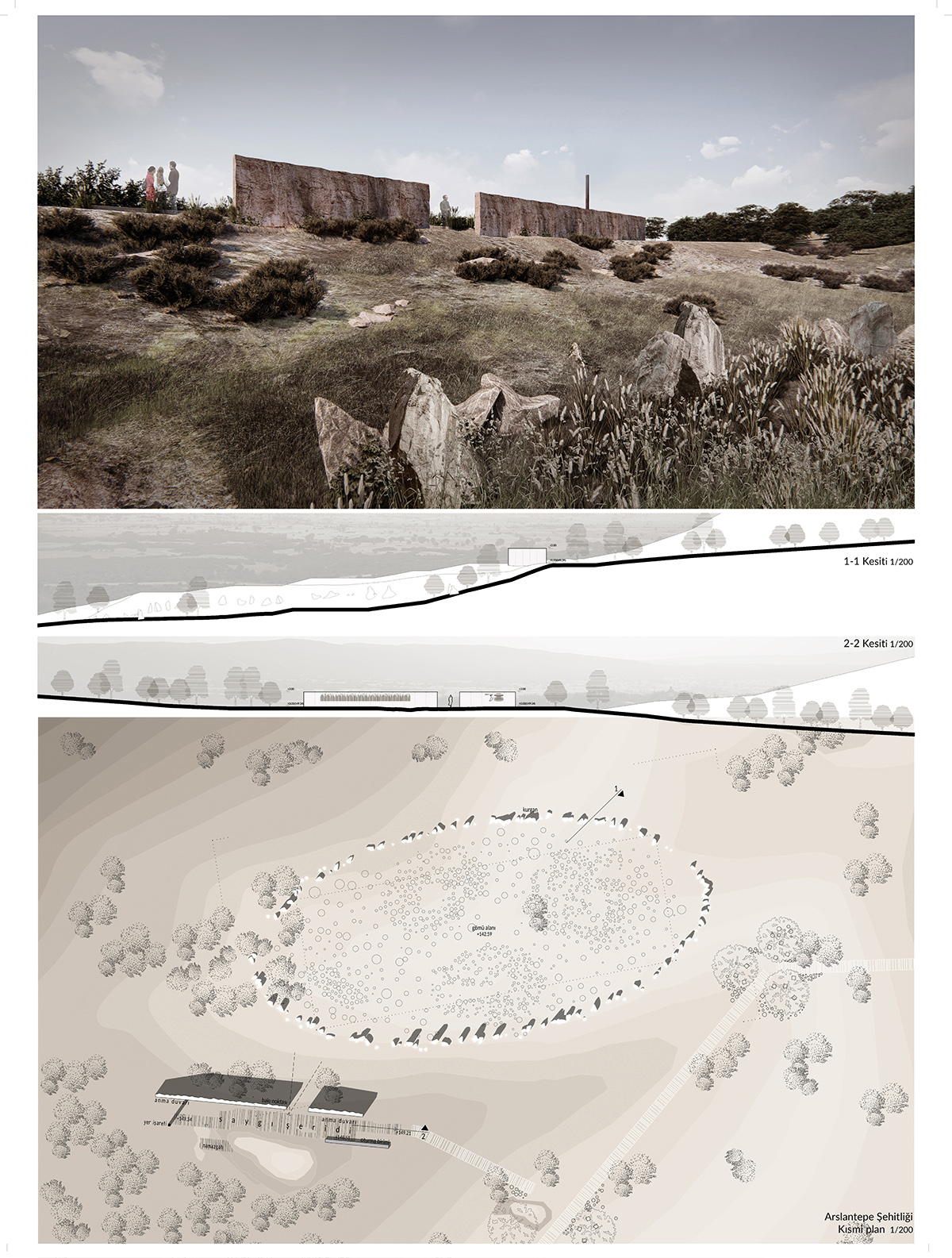
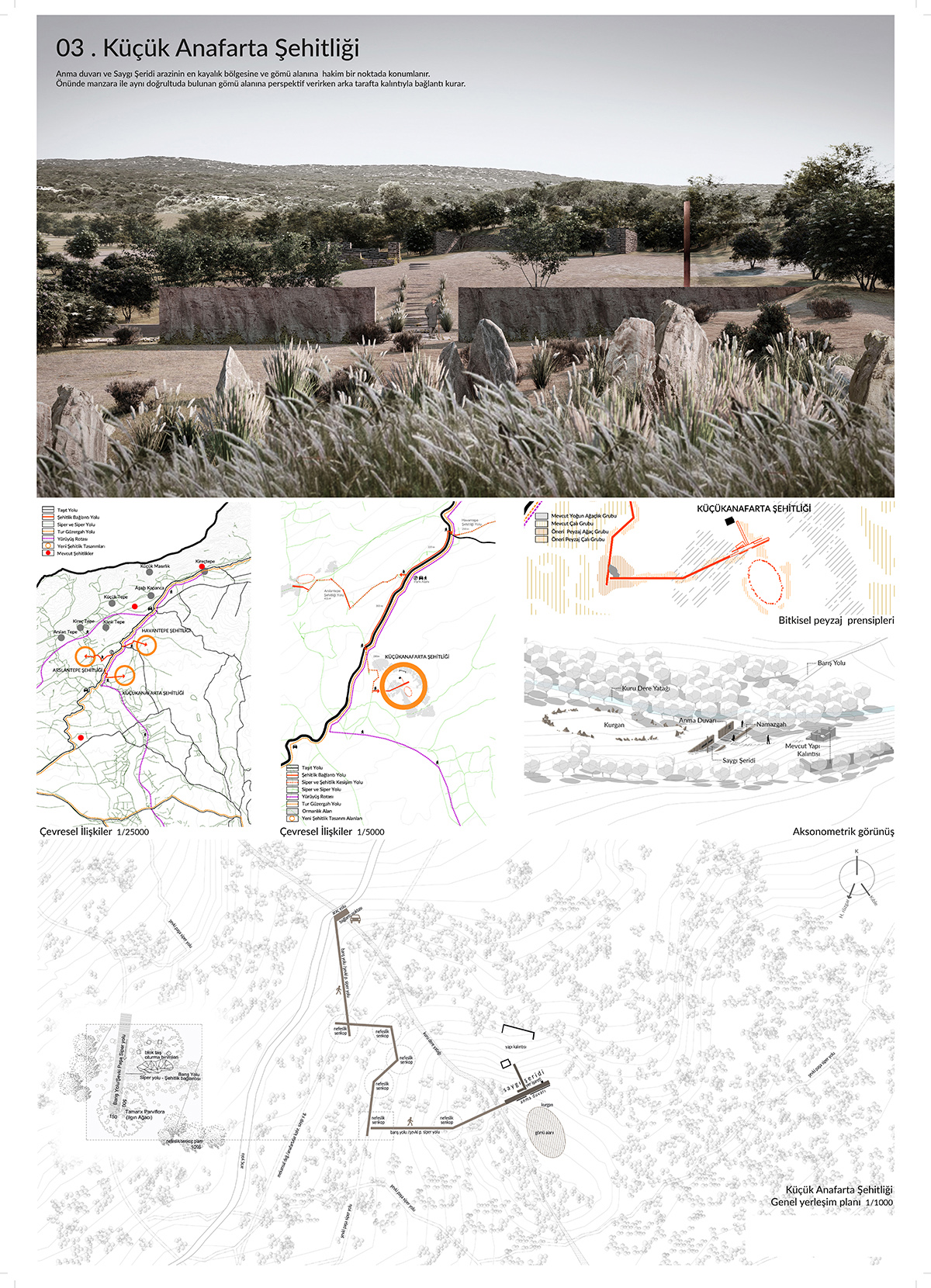
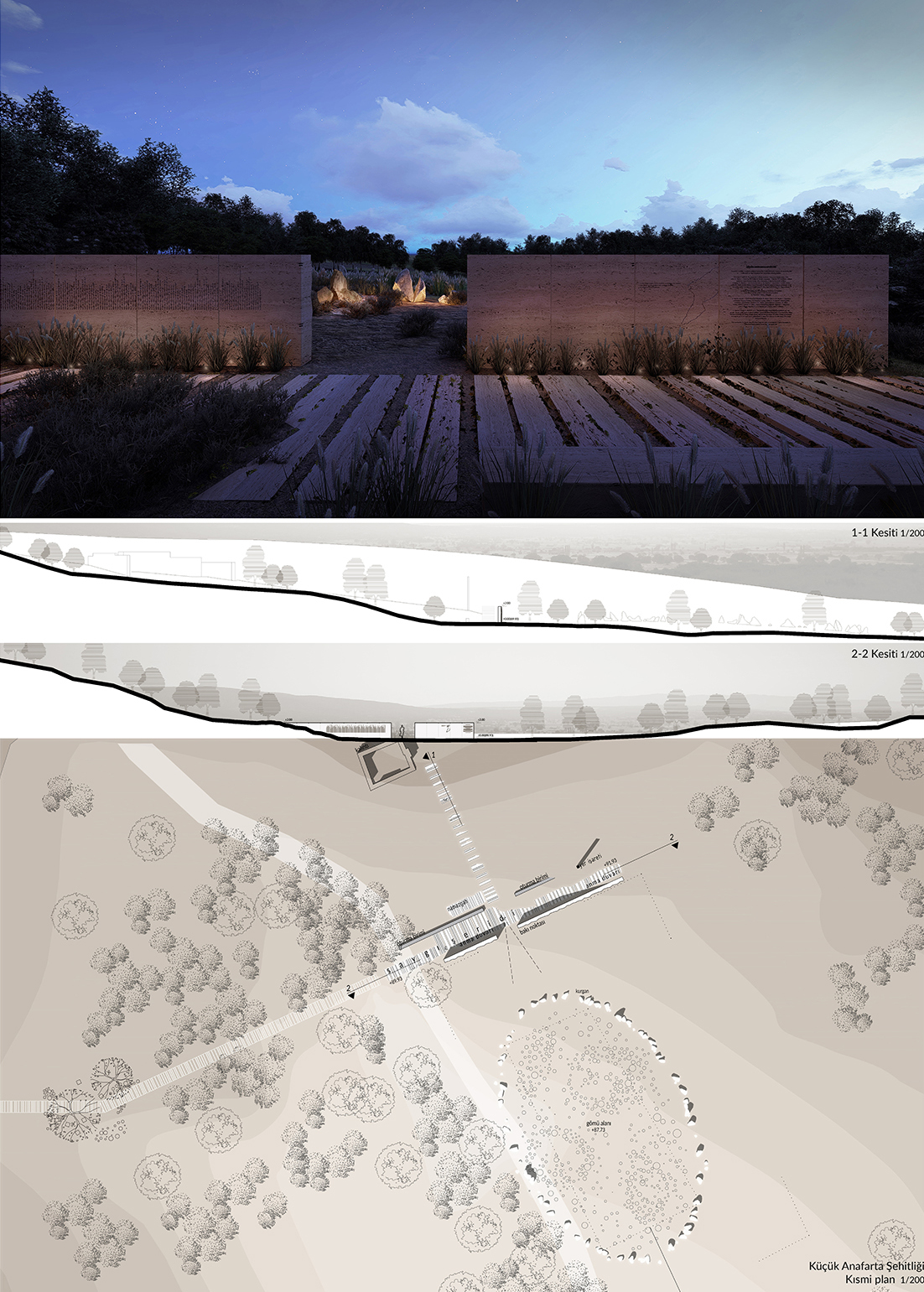
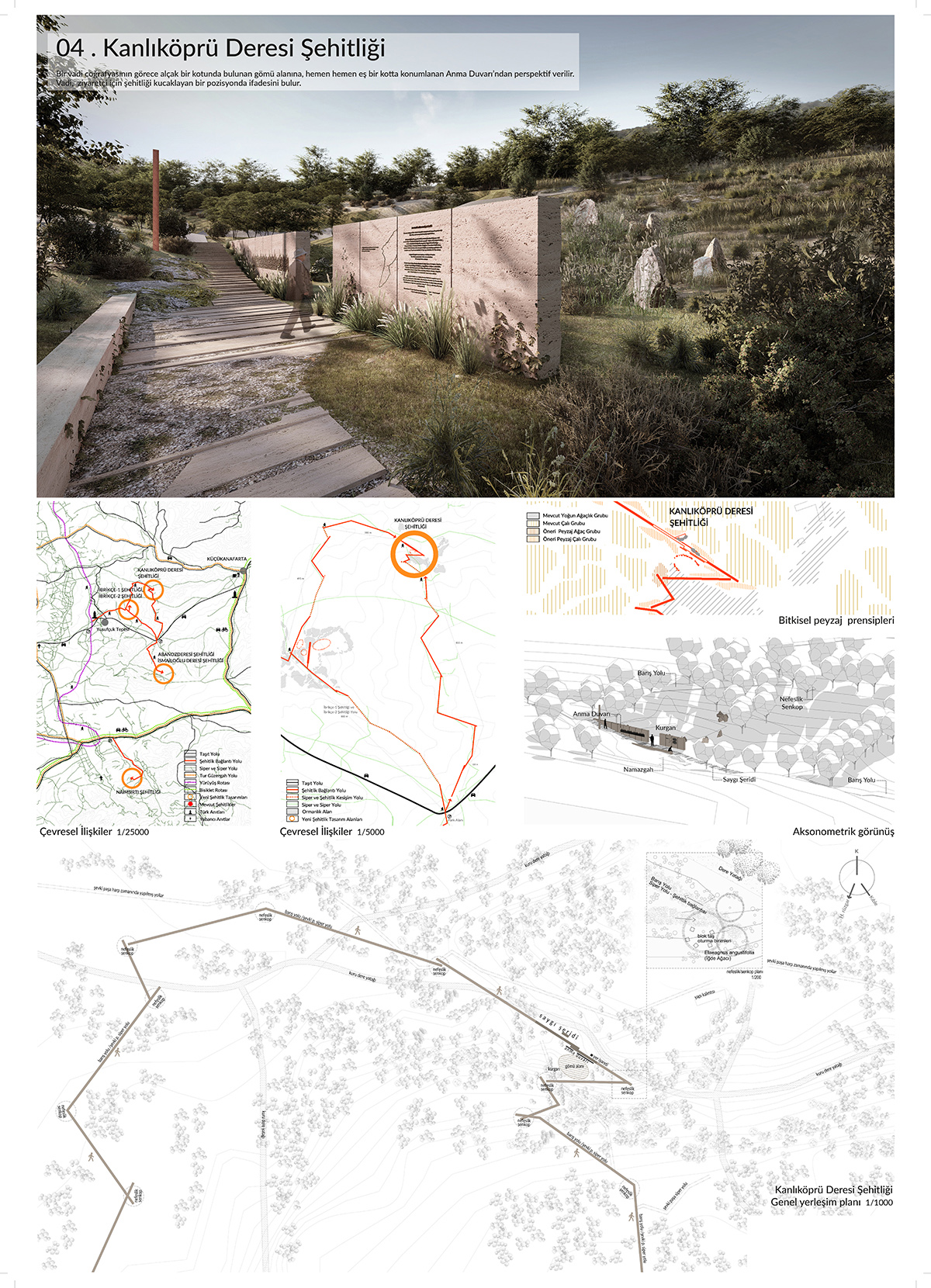
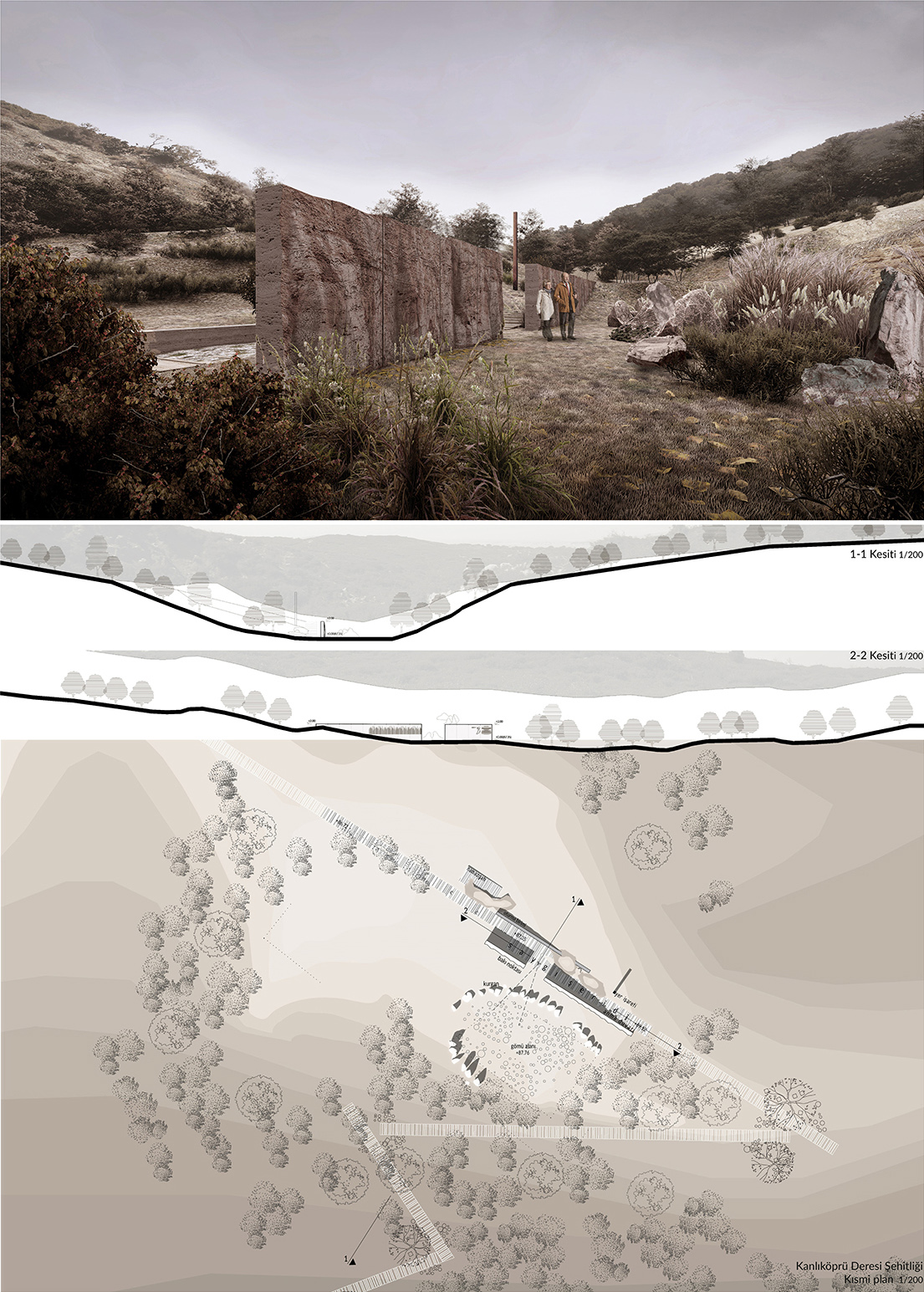
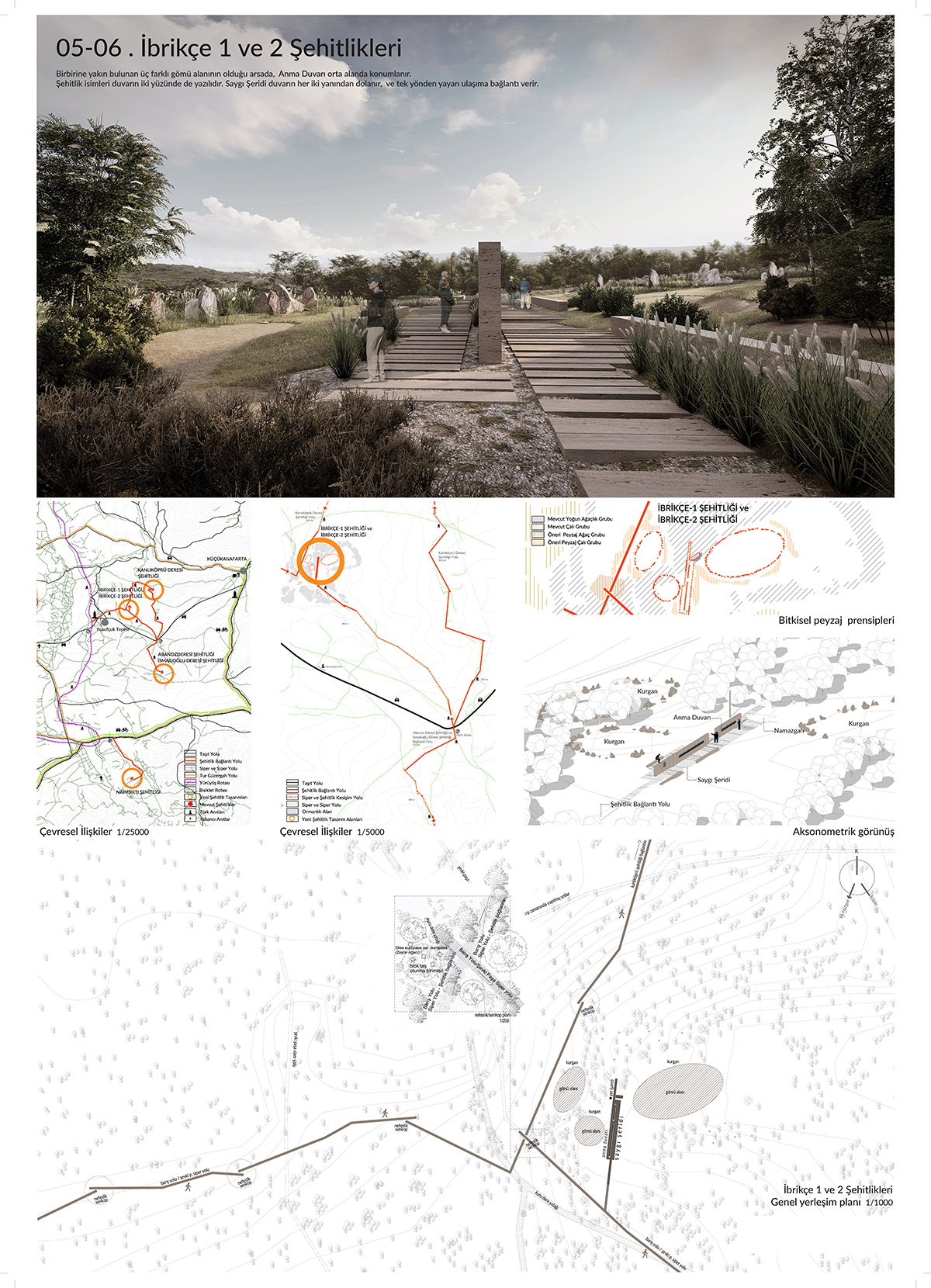
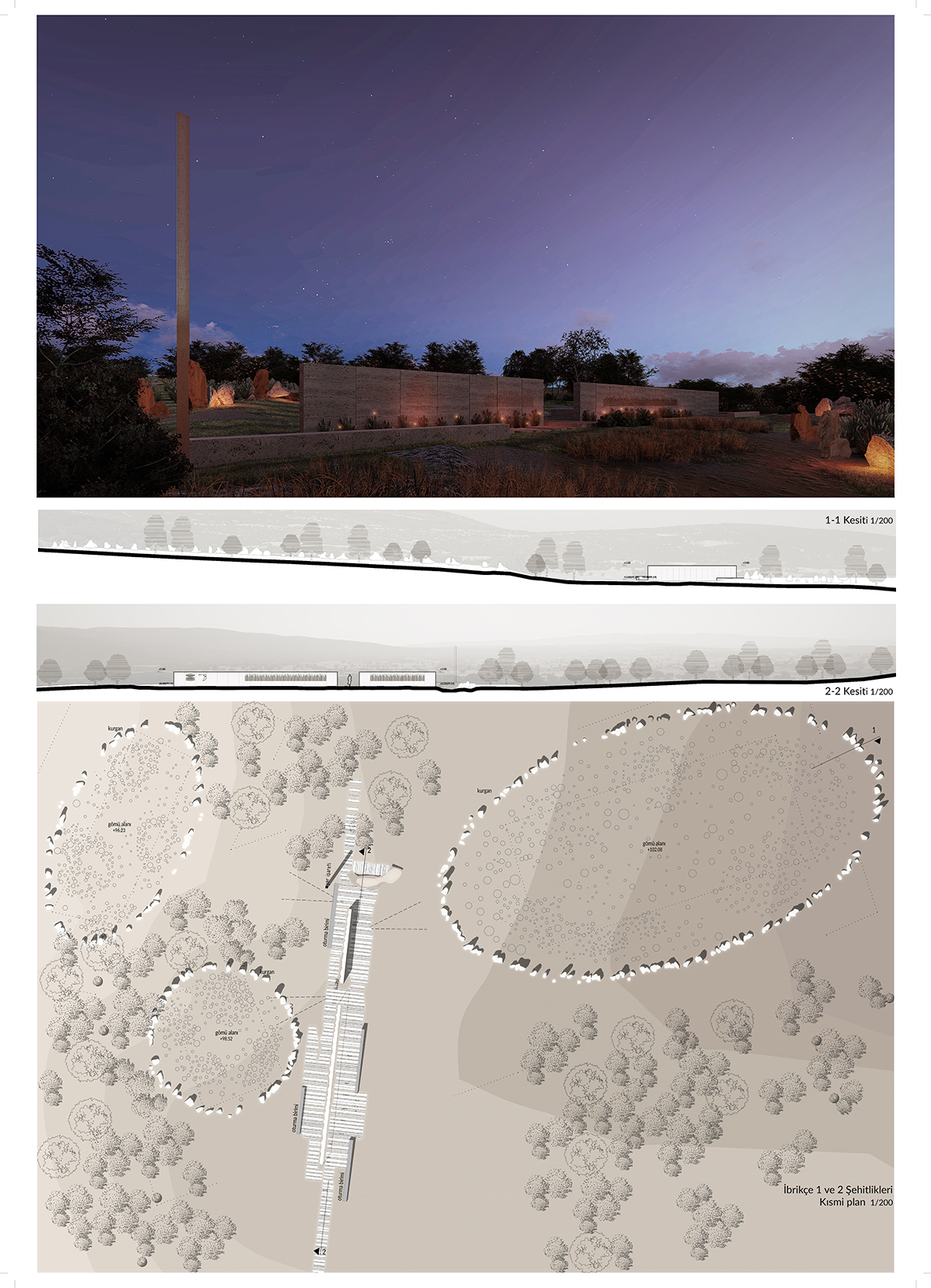
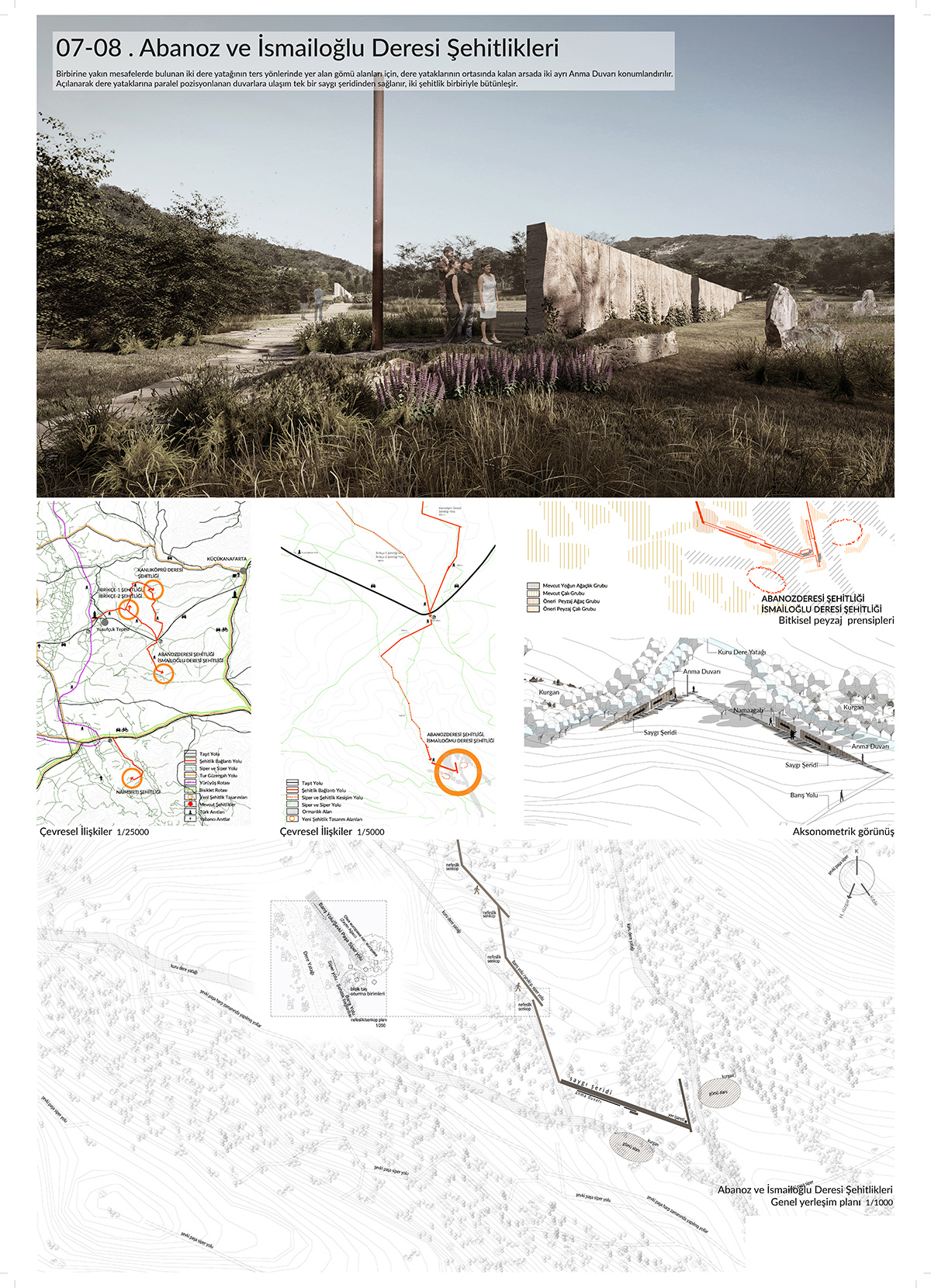
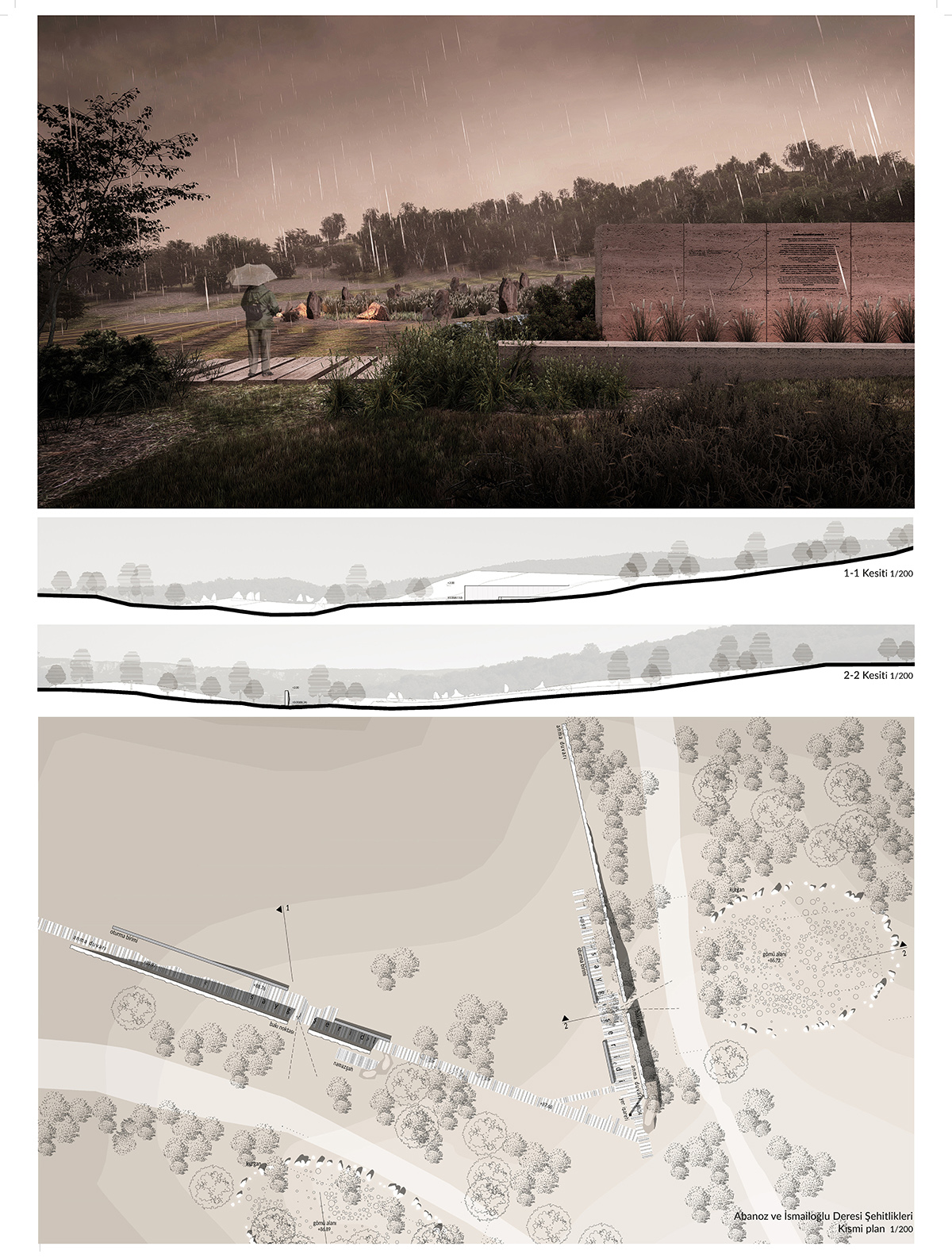
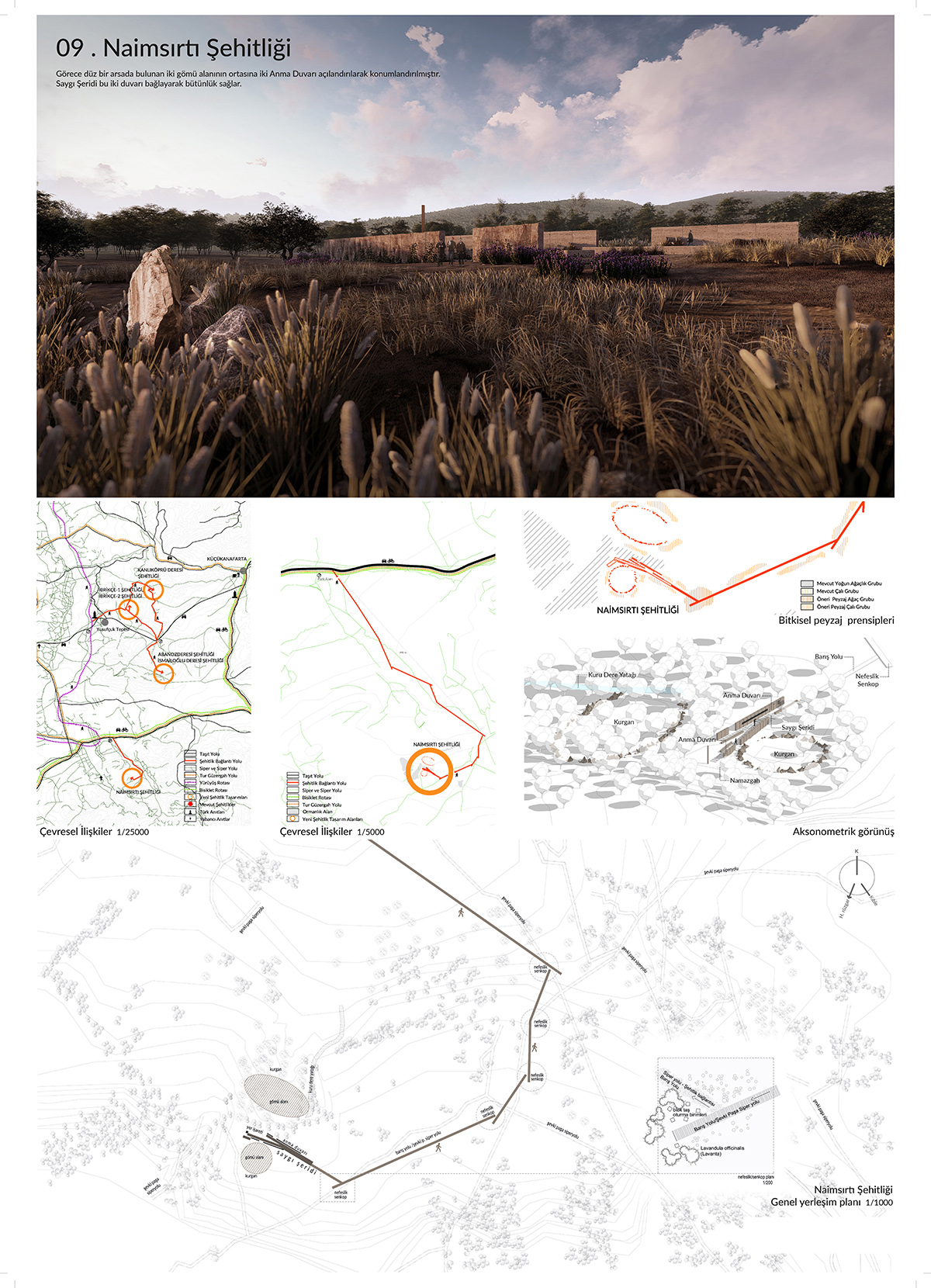
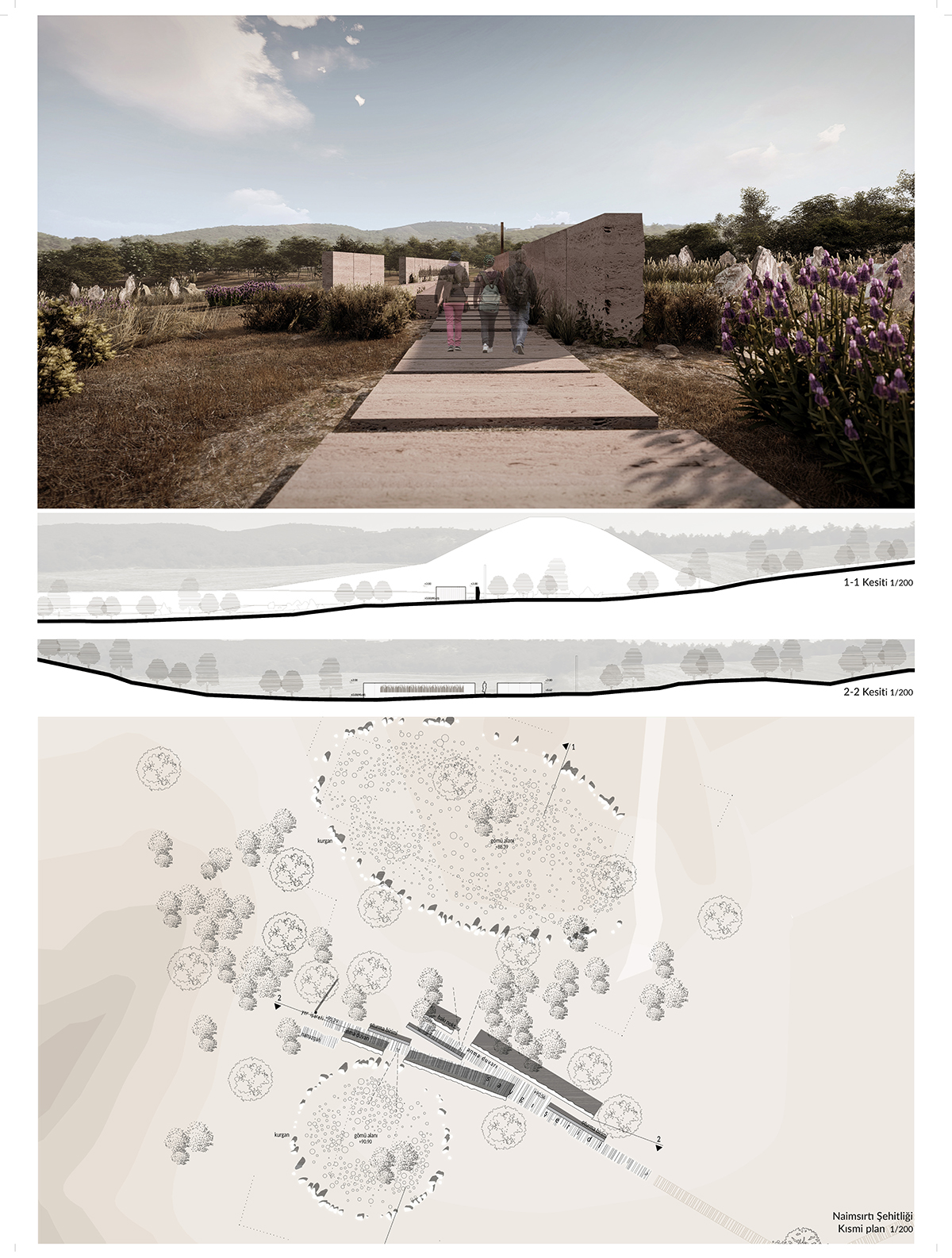
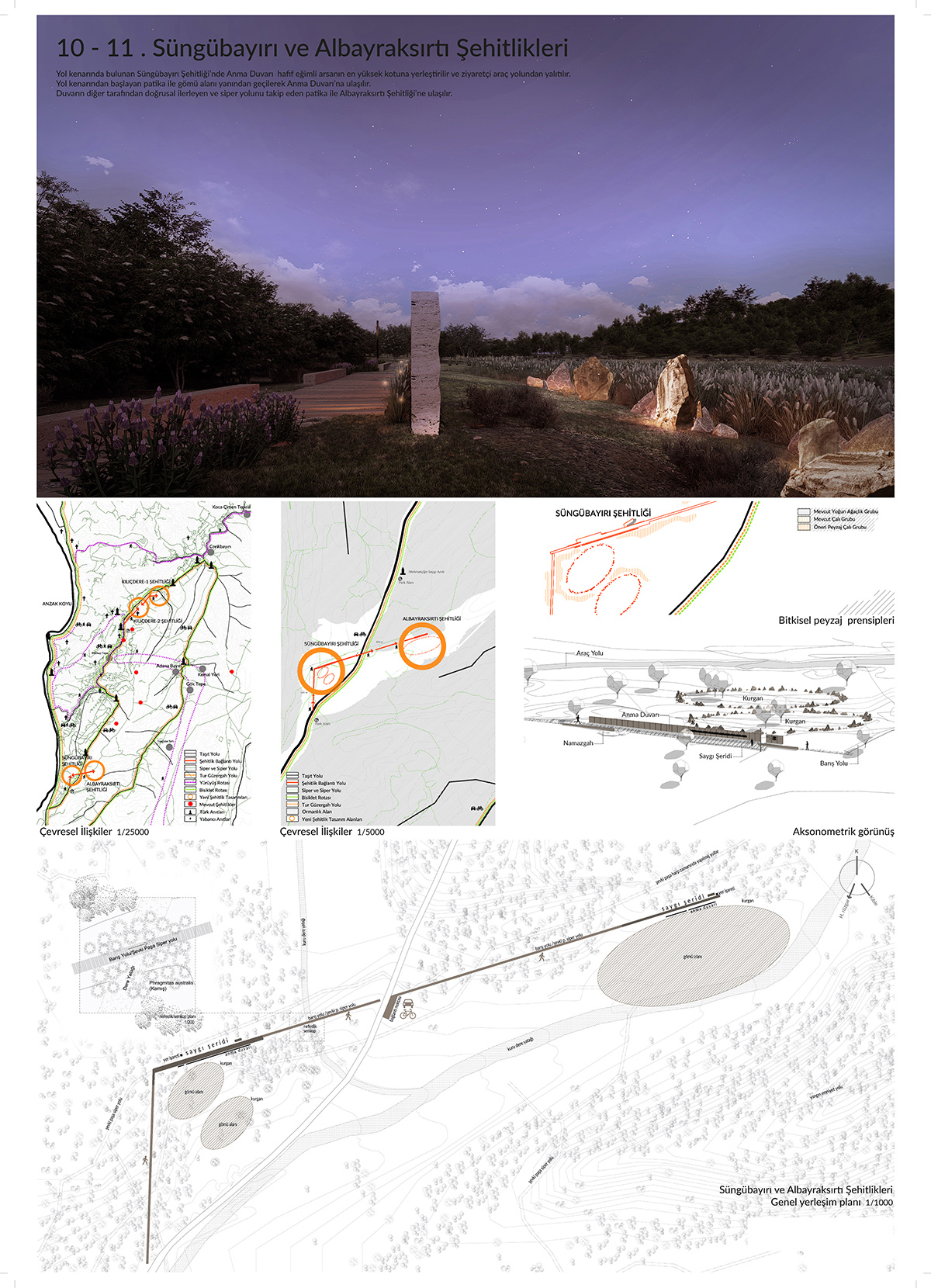
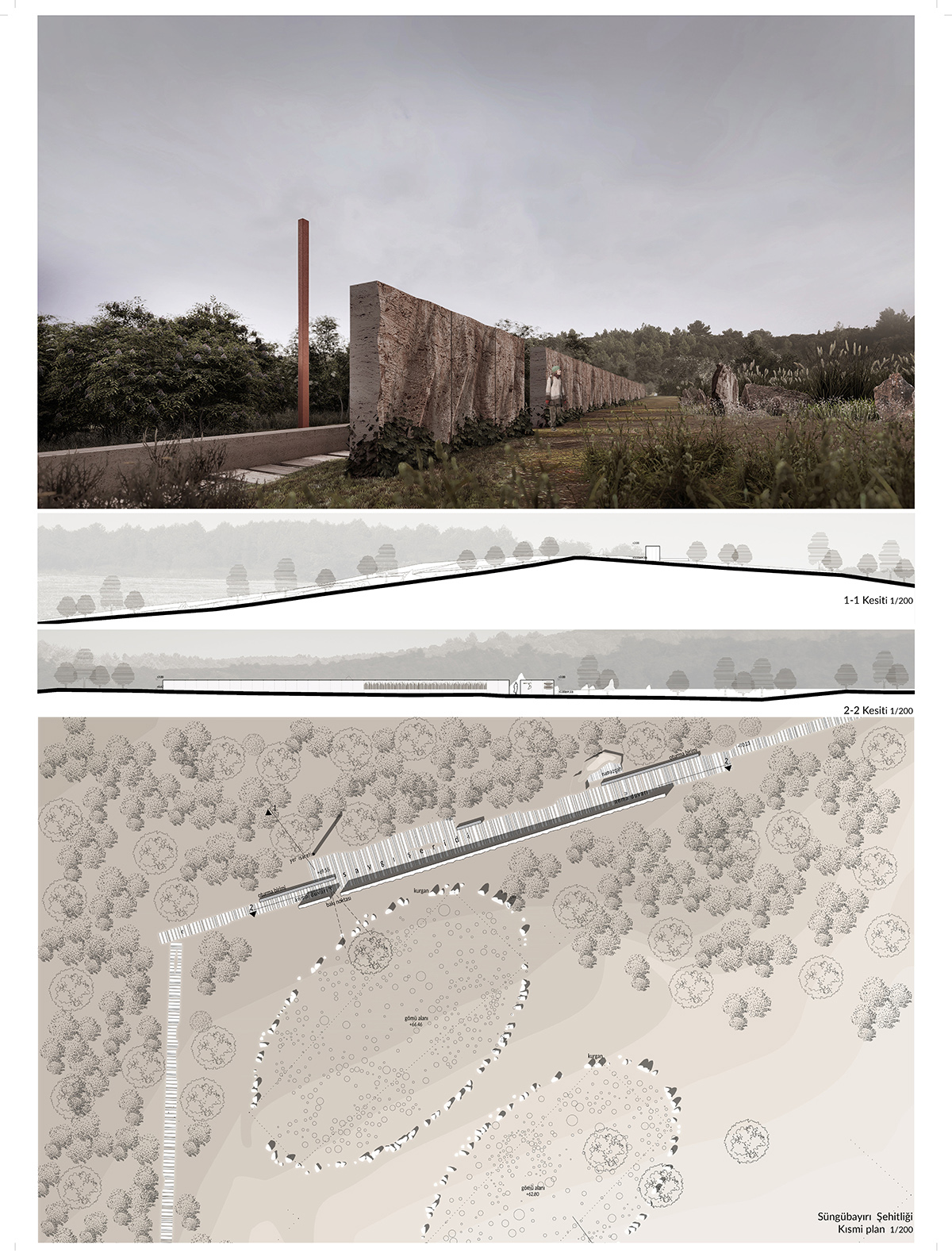
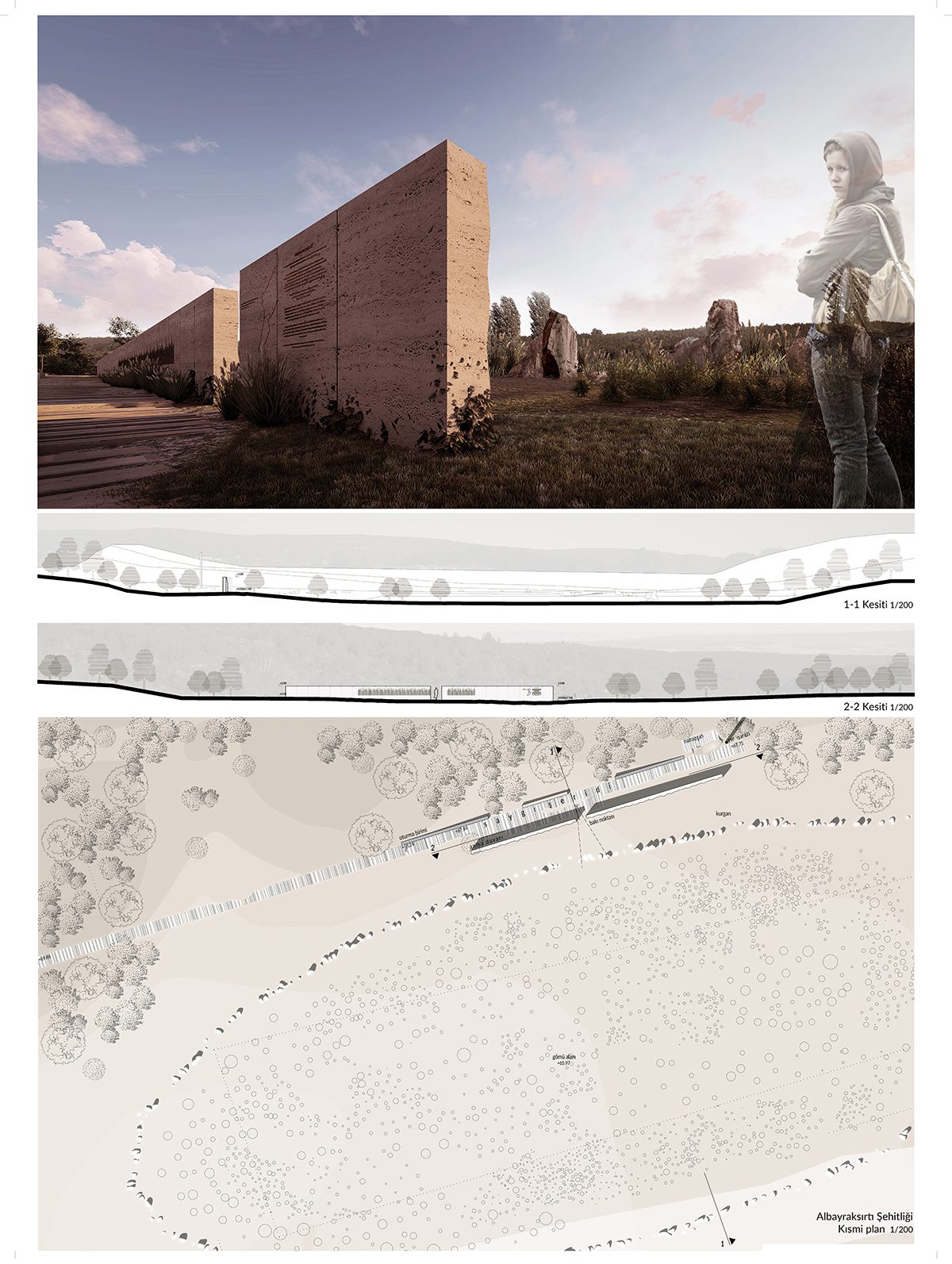

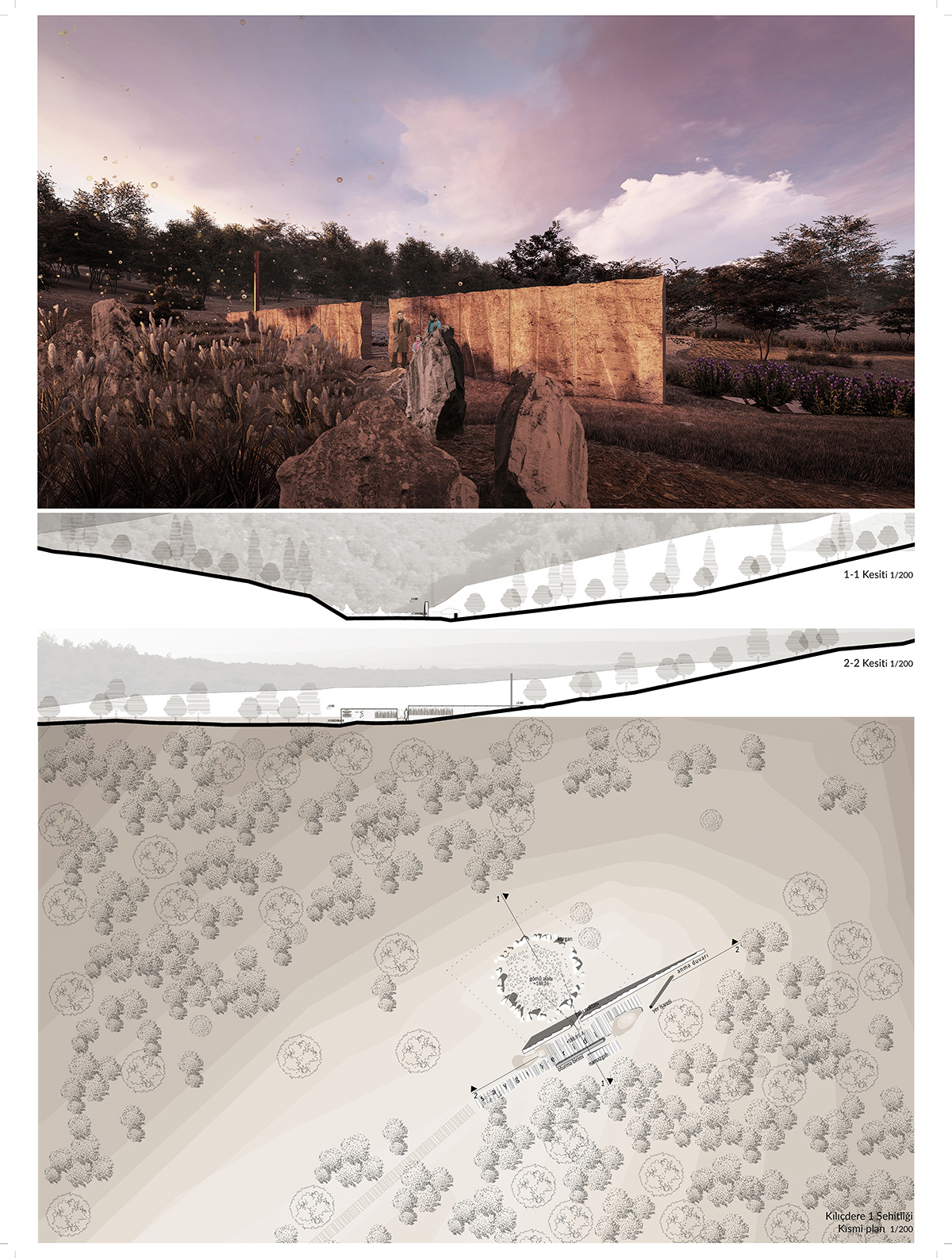
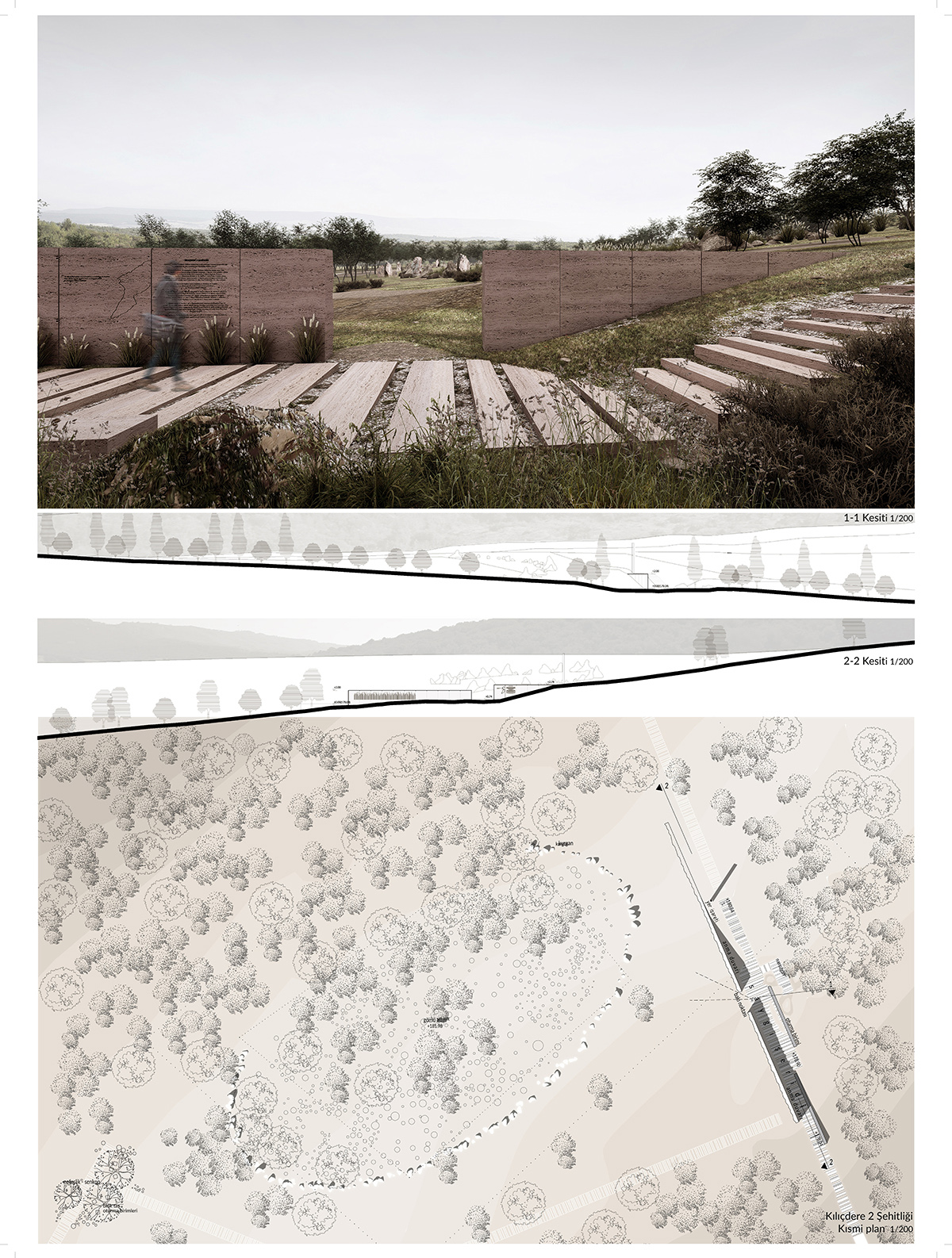
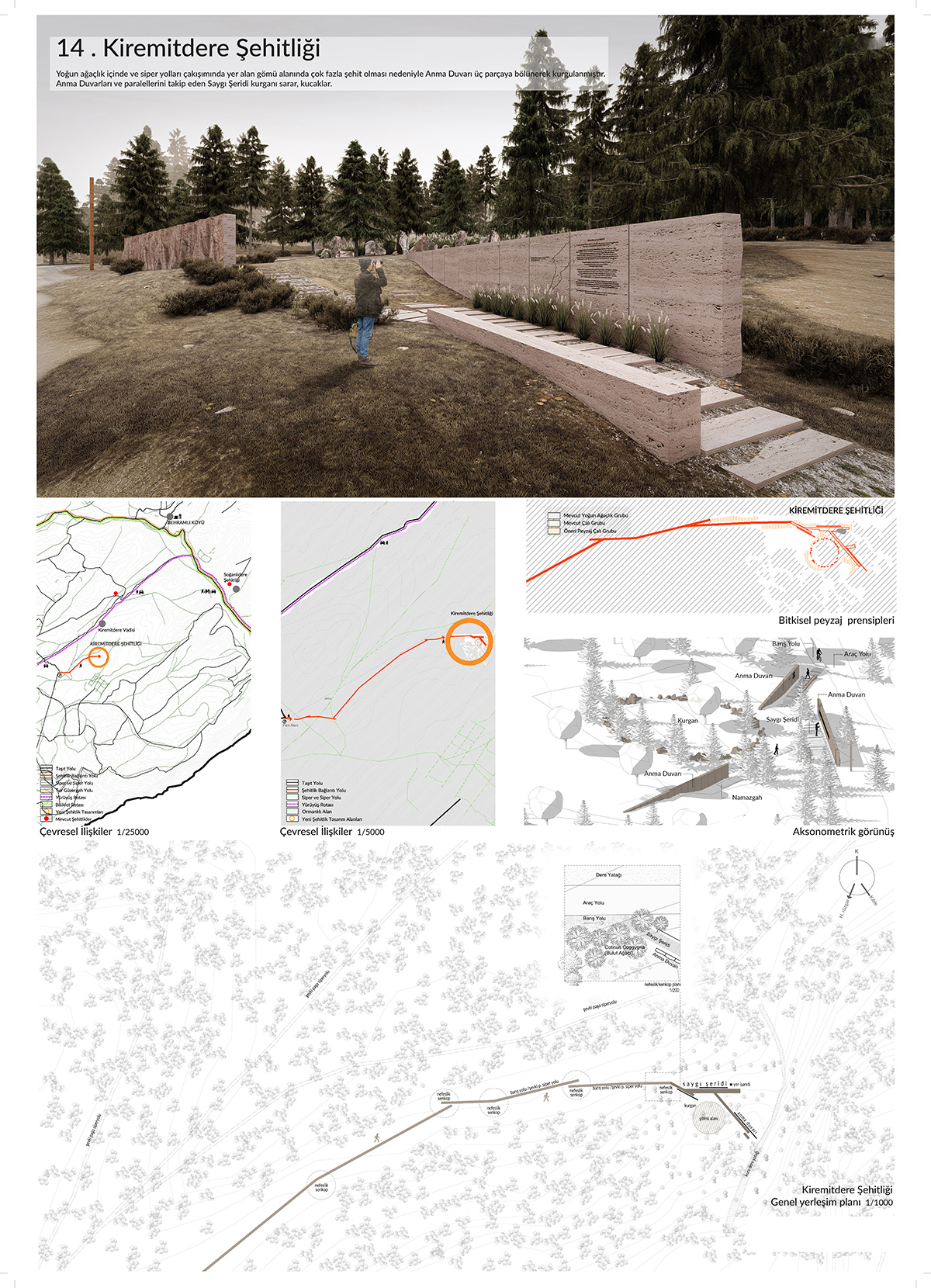
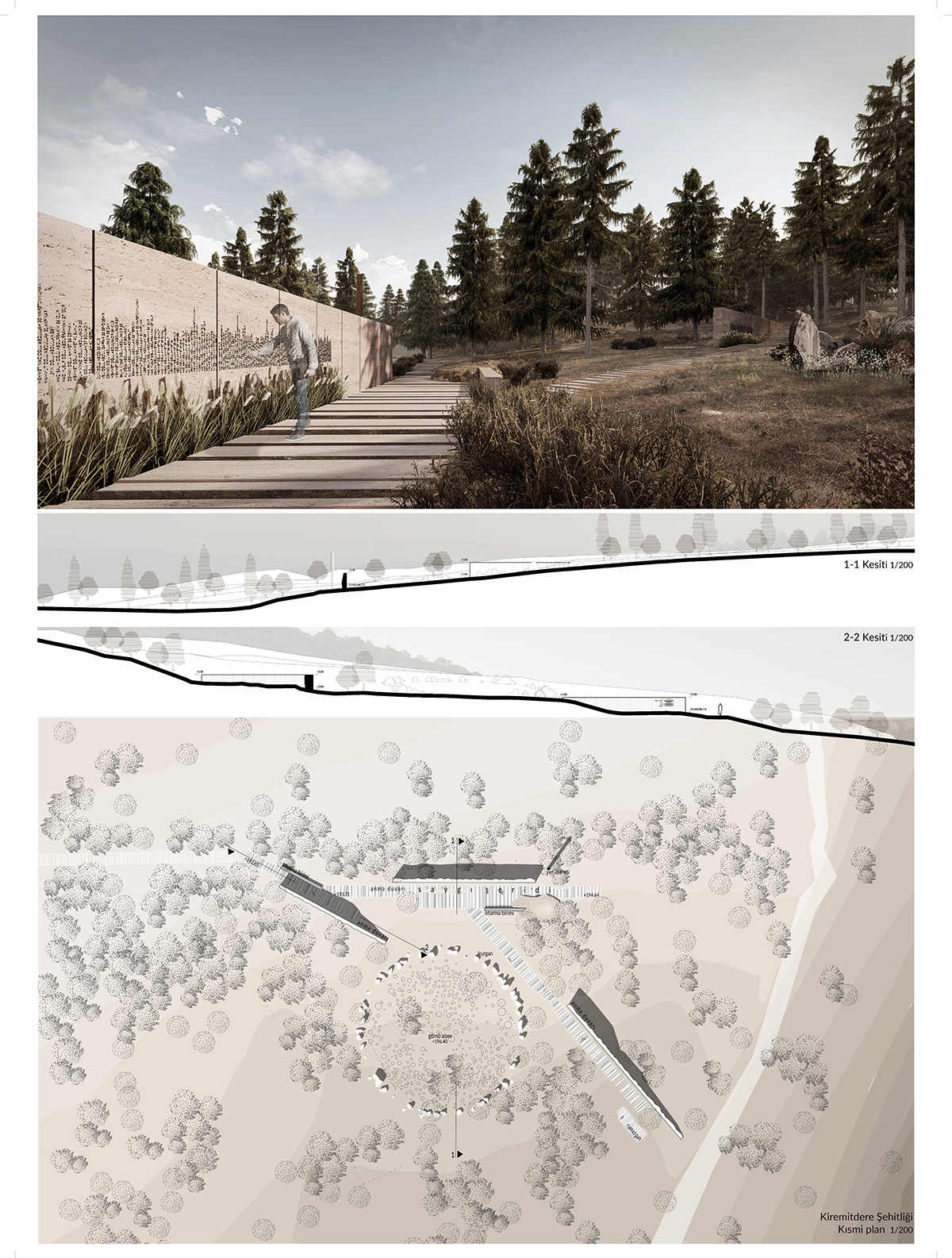
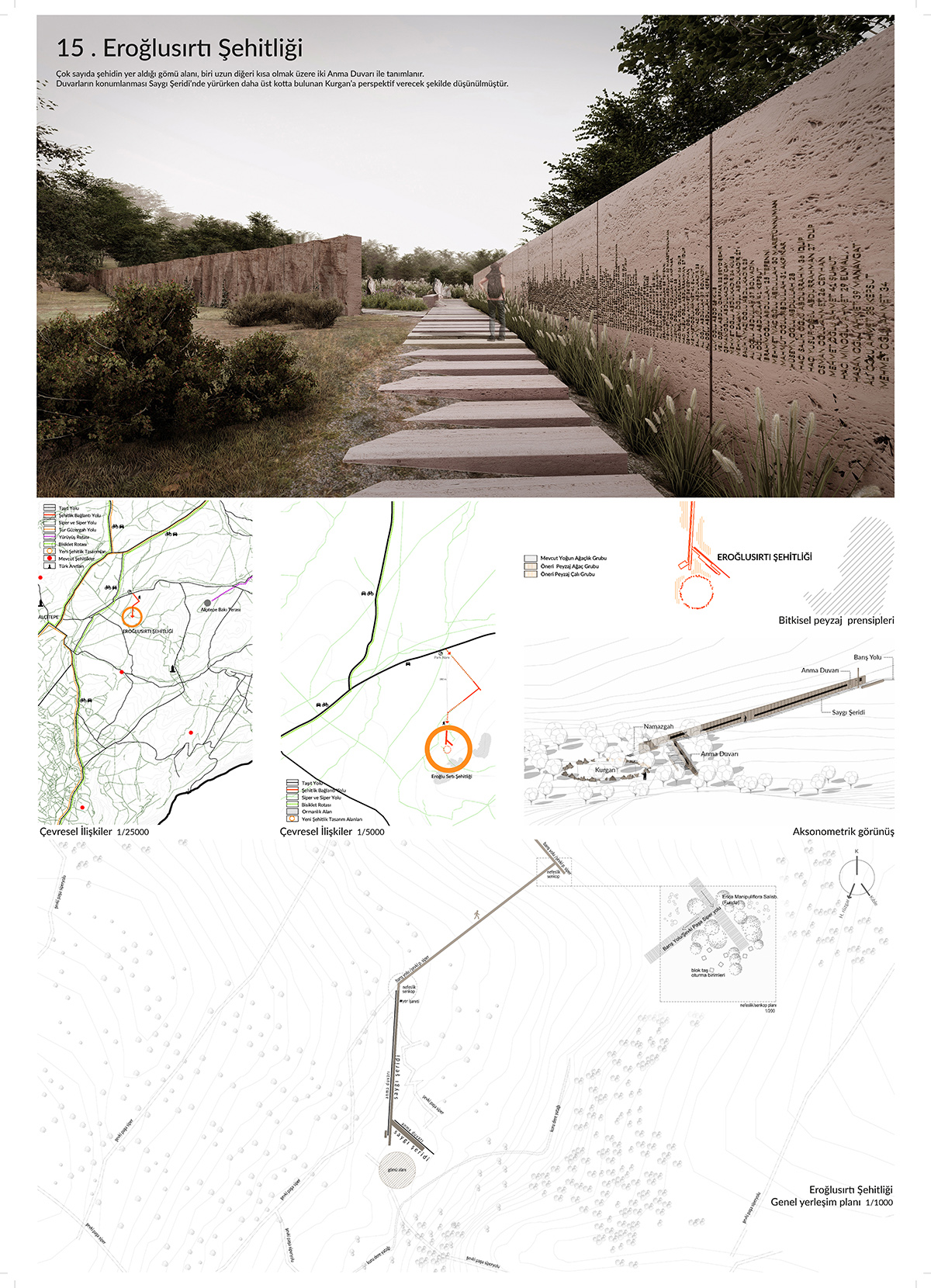
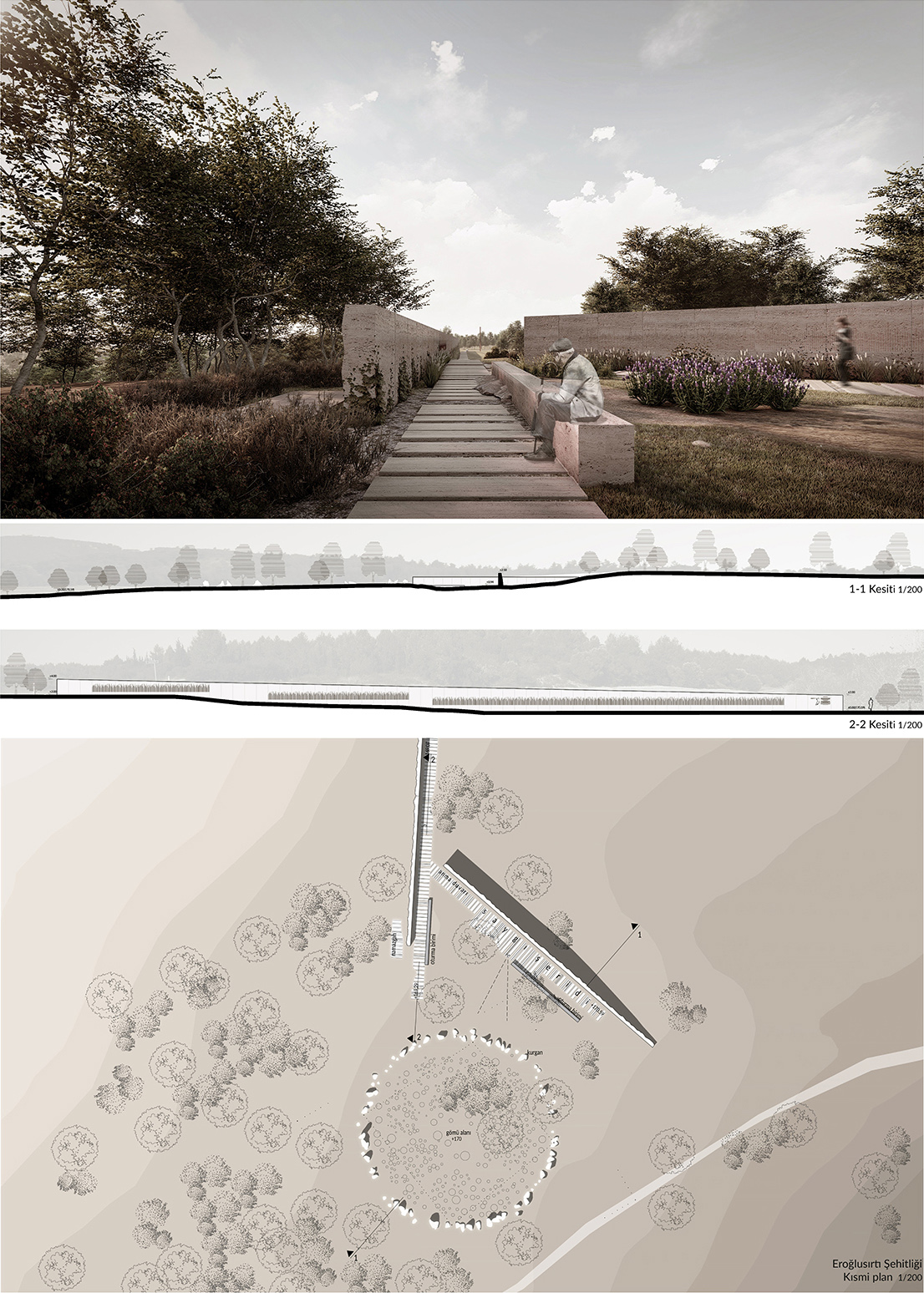

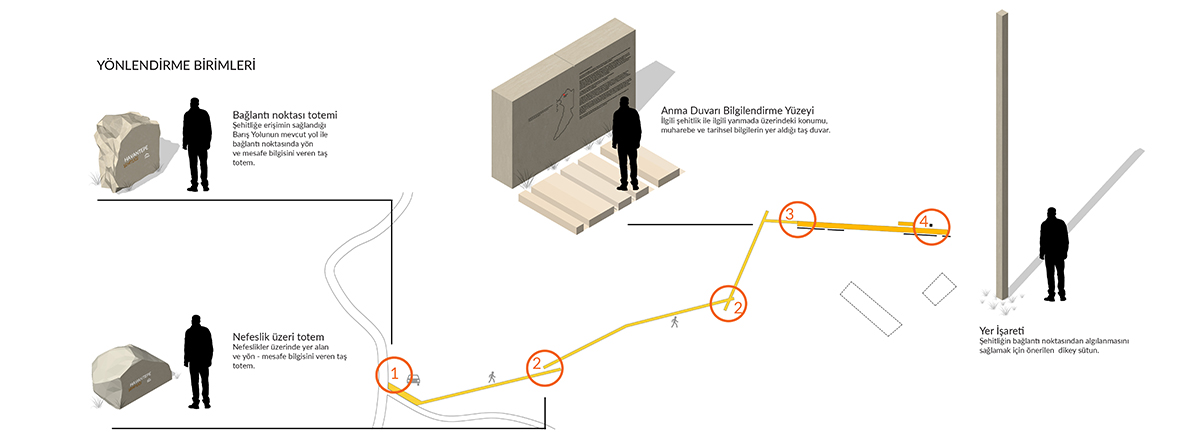
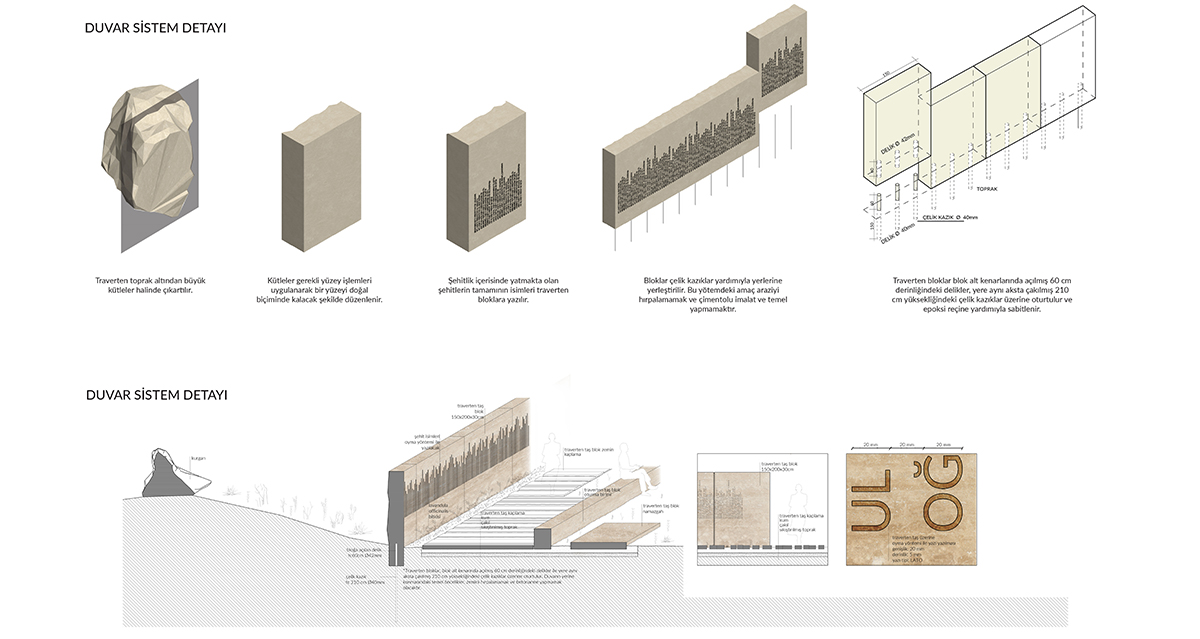


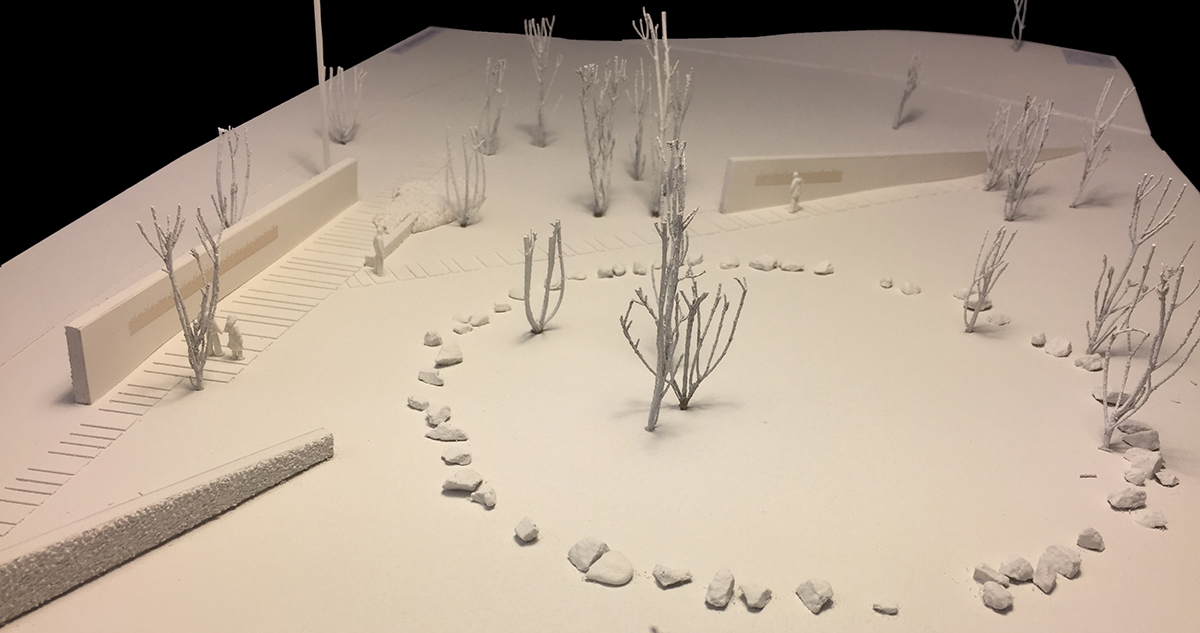
DESIGN
- Semra Uygur
- Özcan Uygur
- Deniz Uygur
- Seden Cinasal Avcı
- Ramazan Avcı
- Fatih Yavuz
- Emre Şavural
As a life & death, war & peace geography, Gallipoli Peninsula embodies various timescapes in one actual space and allows to implement sociocultural manifestation while maturing into an integral collective identity.
With the proposal, the concept of martyrs’ memorial is regarded as a specialized commemoration space
while considering the commemorative intrinsic quality of the geography is already the most inherent
value. The architectural approach is focused on generating a spatial pattern to enable visitors to
get dissolved in the geography while having minimum structural intervention.
Memorial visits are composed with the sequence of Exploration-Contemplation-Sensation.
Auto-transportation ends on the existed cadastral roads and the pedestrian experience begins. The
former trench and war roads get transformed into the pathways and defines the new Peace Road. At the
arrival to the site, visual connection with the grave zones gets interrupted by travertine wall(s).
As a particular respect component this Remembrance Wall generates temporary distances between
visitors and martyrs. In a defined contemplation zone, the Respect Band comes into existence. With
the cuts and breaks on the walls, vistas are formed towards the grave zones. Grave zones are marked
with stones around as a reinterpretation of Kurgan which is a typology of burial mound among
Turkic-Altaic cultures.
- Location
- Competition
- Client
- Gallipoli, Çanakkale, Turkey
- 2017, 1st Prize
- Directorate of Gallipoli Historic Site


